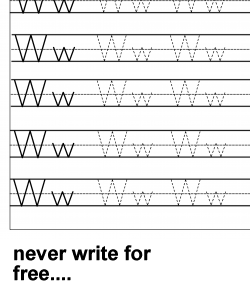n#Copywriter Heavenunc comwrite-wellxmadsa quis quick
Advice and help for would be copywriters
Next:
Anybody Who Knows No Other Way To Judge Ads Than By A Set Of Rules Should Look Deeply Into His Soul...
Anybody who knows no other way to judge ads than by a set of rules should look deeply into his soul and consider whether a computer couldn't do his job better. Rule 3 Read the website by all means, but don't believe everything you read. Having laid a few ghosts, let us take a serious look at what constitutes a good ad. Whatever the aesthetes may say, and they do tend to say a great deal about nothing, the only way to determine whether an ad is a good one or a bad one is by the way it helps to shift product. In other words, an ad that doesn't create a buying response or, at least, produce a desire to want to know more, is not an ad.
Any other considerations for the evaluation of online advertising are secondary. Having said that, there are three different kinds of advertisement. 1 The ad that informs the reader of the availability of a product and urges further action. 2 The ad that sells 'off the page' via a coupon - which the likes of Scotcade do remarkably well. 3 The so-called prestige ad, in which a manufacturer or service fills space with self-congratulatory statements purely as a PR exercise.
There are also things called blackmail ads. These appear in local peripheral publications like sports programmes, association magazines, and such; and the poor old client is well-nigh forced into appearing in them on account of his refusal would be deemed mealy-mouthed and discourteous. Ad type number one can be broken down into a myriad of sub-orders.
For the sake of brevity, however, and so as not to send you comatose with wadges of detail, we'll examine the two main kinds: the launch ad and the follow-up ad. In preparing a campaign for any given product, we must first determine the market. Common sense will automatically play a big part here - like, for instance, there's little future trying to promote electric drills in a magazine called True Life Romances where the readership might be unmarried girls and women aged between fourteen and thirty. Most of the time, however, products tend not to be so clearly market-defined. Take our Hair Today product.
Knowing that this stuff will virtually grow fuzz on billiard balls, it follows that the type of people we want to reach are a complete cross-section of any given population. Their only qualification is that they have to be either completely bald, going bald, or are worried about having baldness thrust upon them.
For all I know, there is a publication called Bald Monthly which caters for, commiserates with and offers remedies to cure baldness. If there is, we're laughing. We simply take as much space in that mag as the budget will allow, arrange some sympathetic editorial features - with authenticated tests, and before-and-after pics - and then sit back to wait for the gravy-boat to come steaming in. In reality, we'll have to appear in every kind of media possible to catch the eyes and the interest of the broad spectrum of people we're looking for.
Do we therefore produce just one ad for the lot? In fact, there's no good reason why we shouldn't. A well-prepared, carefully worded launch ad for a product which cures baldness overnight will be as much at home in The Financial Times as the Sun. We may, of course, be tempted to include a topless blonde in any illustration for the latter paper, but that would only be owing to the fact that the copywriter wants to be in on the photographic session. So how do we frame the initial thought? Well, the first thing we'll do is work through all the puns of and about hair, hare and heir and, if we have any sense, confine them to the waste-bucket.
...next: >>

